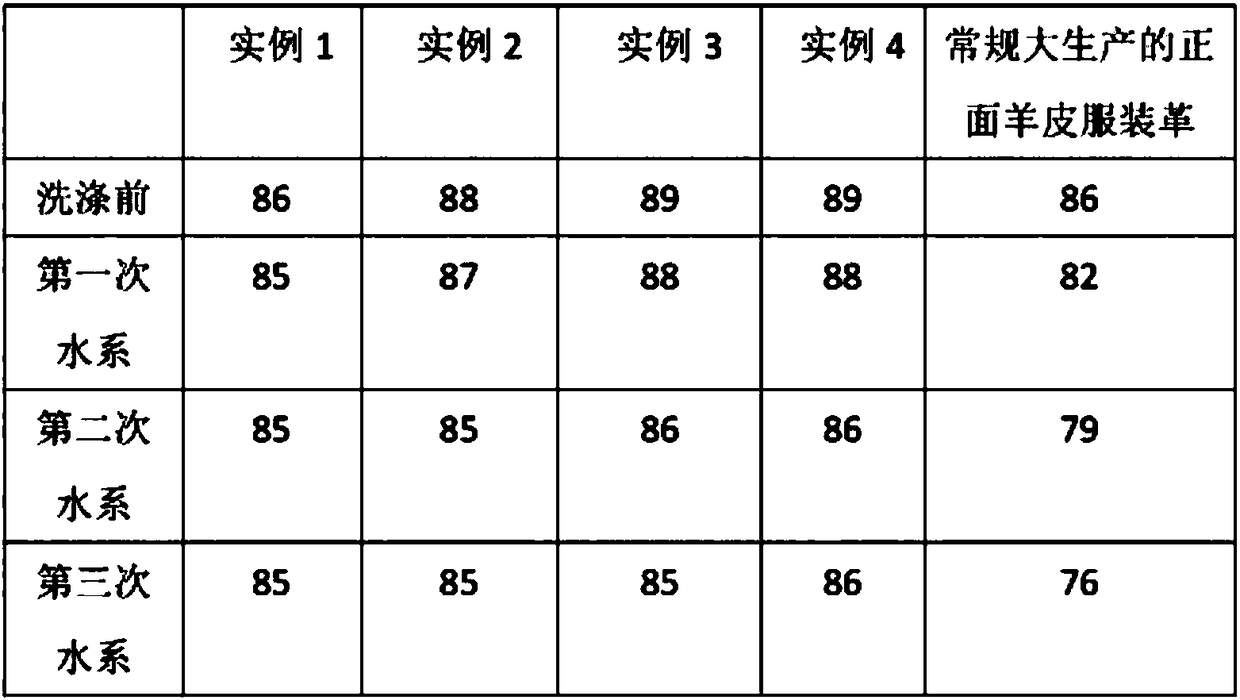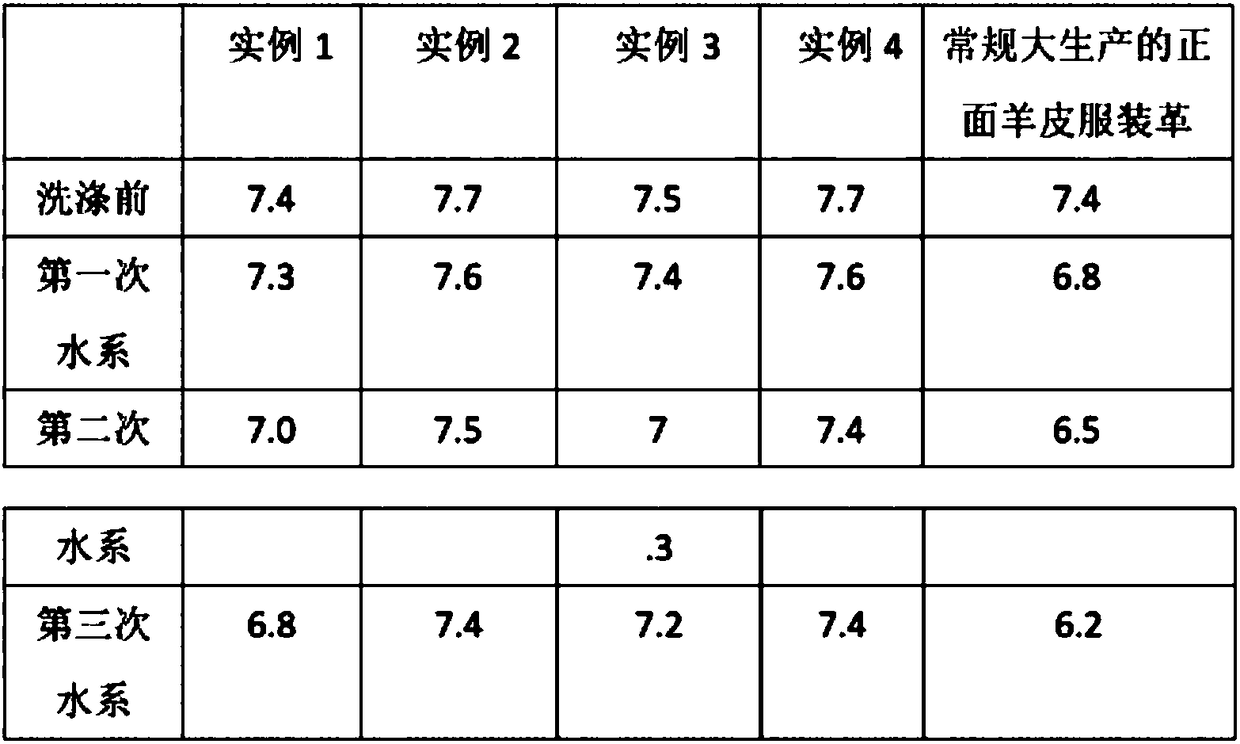A kind of environment-friendly sheepskin garment leather processing technology
A processing technology and garment leather technology, applied in leather dipping, leather surface treatment, small raw hide/large raw hide/leather/fur treatment, etc., can solve problems such as poor washing resistance, chrome tanning is not environmentally friendly, and improve mechanical performance effect
- Summary
- Abstract
- Description
- Claims
- Application Information
AI Technical Summary
Problems solved by technology
Method used
Image
Examples
example 1
[0021] (1) Tanning: 80% of the liquid ratio remains in the conventional garment leather pickling solution, add 0.8% sodium formate, 0.3% baking soda, stir at 28°C for 60 minutes, then add 3.0% aluminum tanning agent and sodium edetate 1 %, and keep rotating for 1 hour, then add 1.0% sodium formate to adjust the pH to 3.5-3.6, stir for 50 minutes, then add 1.2% sodium bicarbonate to adjust the pH to 4.0, then raise the temperature to 30°C, and stir for 300 minutes;
[0022] After the described tanning step, carry out successively the steps of taking out the drum and putting the horse on the horse, pressing water to soften it, slicing the skin, and shaving and trimming the edges. The double thickness of the leather is 1.2cm;
[0023] (2) Retanning: the ratio of mediation solution is 150%, add wattle bark extract 2%, small molecule acrylic acid retanning agent 1%, rotate at 40°C for 1.5h, then add 1.1% sorbitol and 0.2% naringin, rotate 60 minutes, add 0.2% baking soda to adjust...
example 2
[0027] Starting from the sour skin embryo, the amount of additives added in each process is based on the weight of the sour skin:
[0028] (1) Tanning: 80% of the liquid ratio remains in the conventional clothing leather pickling solution, add 1.3% sodium formate, 0.6% baking soda, stir at 28°C for 90 minutes, then add aluminum tanning agent 4.2% and 1, 2, 3, 4 in sequence , 1% sodium salt of 5,6-cyclohexanehexacarboxylic acid, and keep rotating for 1 hour, then add 1.2% sodium formate to adjust the pH to 3.5-3.6, stir for 70 minutes, then add 2.0% baking soda to adjust the pH to 5.0, and then heat up To 40°C, stir for 400min;
[0029] After the described tanning step, carry out successively the steps of taking out the drum and putting the horse on the horse, pressing the water to soften it, slicing the skin, and shaving and trimming the edges. The double thickness of the leather is 1.3cm;
[0030] (2) Retanning: mediation ratio 200%, add wattle bark extract 3%, small molecu...
example 3
[0034] Starting from the sour skin embryo, the amount of additives added in each process is based on the weight of the sour skin:
[0035](1) Tanning: 80% of the liquid ratio is left in the conventional garment leather pickling solution, add 1.0% sodium formate, 0.5% baking soda, stir at 28°C for 75min, then add 3.6% of aluminum tanning agent and 1% of sodium gluconate successively, and Keep rotating for 1 hour, then add 1.1% sodium formate to adjust the pH to 3.5-3.6, stir for 60 minutes, then add 1.6% baking soda to adjust the pH to 4.5, then raise the temperature to 35°C, and stir for 350 minutes;
[0036] After the tanning step, the steps of taking out the drum and putting the horse on the horse, pressing water to soften it, peeling and trimming the edges are carried out sequentially. The double thickness of the leather is 1.2m;
[0037] (2) Retanning: the ratio of mediation solution is 170%, add wattle bark extract 2.5%, small molecule acrylic acid retanning agent 1.5%, ...
PUM
| Property | Measurement | Unit |
|---|---|---|
| thickness | aaaaa | aaaaa |
Abstract
Description
Claims
Application Information
 Login to View More
Login to View More - R&D
- Intellectual Property
- Life Sciences
- Materials
- Tech Scout
- Unparalleled Data Quality
- Higher Quality Content
- 60% Fewer Hallucinations
Browse by: Latest US Patents, China's latest patents, Technical Efficacy Thesaurus, Application Domain, Technology Topic, Popular Technical Reports.
© 2025 PatSnap. All rights reserved.Legal|Privacy policy|Modern Slavery Act Transparency Statement|Sitemap|About US| Contact US: help@patsnap.com



